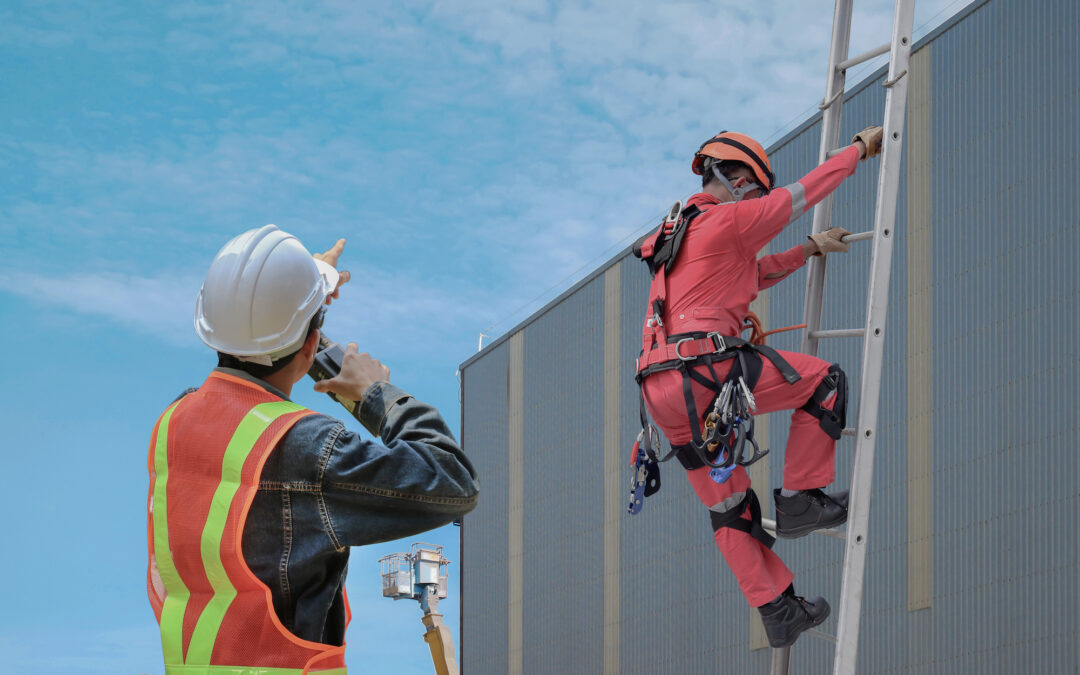Ladders come in a variety of sizes and shapes, from two feet tall to over twenty feet; they can be configured as a step ladder, straight ladder, or used as scaffolding; fixed in place, or portable. They give the worker quick access to objects above ground level. However, they are responsible for causing injury or death if not used correctly. Using ladders safely begins with selecting the right one for the job.
Discussion Points:
• Ensure the employee understands the hazards associated with the ladder
• What are the hazards around the workplace to consider when using the ladder?
• Always inspect the ladder before each use
• When climbing the ladder, always use three points of contact
• Follow the OSHA and ANSI rules, regulations, and guidelines for the ladder
Discussion:
OSHA has specific rules and guidelines that apply to ladders. They are covered under standard 29 CFR 1910.23. The guidelines take into consideration the ANSI Standards for Load Rating, and only those that meet the maximum weight capacity for industrial-grade general use are covered. Ladders that do not meet the ANSI Standards for general industrial use should not be used in the workplace. Falling from the ladder or coming in contact with overhead power lines are among the leading cause of injury. OSHA specifies these accidents can often be prevented by receiving proper training, following safety practices, and inspecting equipment.
Employers are responsible for providing training for all employees who use ladders. The employee should learn to recognize hazards related to ladders, procedures to follow to minimize the hazards, and how to use a ladder correctly. It’s the employees’ responsibility to follow company rules, regulations, guidelines, and manufacturer recommendations when using the ladder. The manufacturer’s guidelines, instructions, and Duty Ratings are printed on labels attached to the side rails of the ladder. Other information displayed on the labels includes the manufacturer’s name, the model type, the date it was manufactured, the size and maximum working length, the highest standing level, and warning markings such as “Danger” and “Caution.” These labels are mandated for manufacturers so workers can determine if the correct type of ladder is being used for the job. If the label becomes worn, it should be replaced. If you have any questions, ask your supervisor for clarification. OSHA and ANSI regulations reduce costs related with injuries and cited violations, reduce lost productivity, and improve the work environment; making it a safer place for workers and ensuring everyone goes home safely at the end of each day.
As always, be safe out there!


Recent Comments